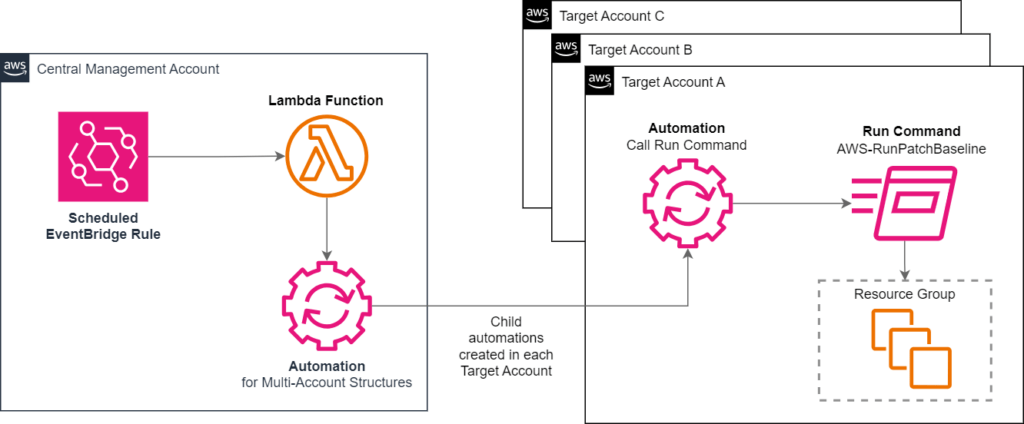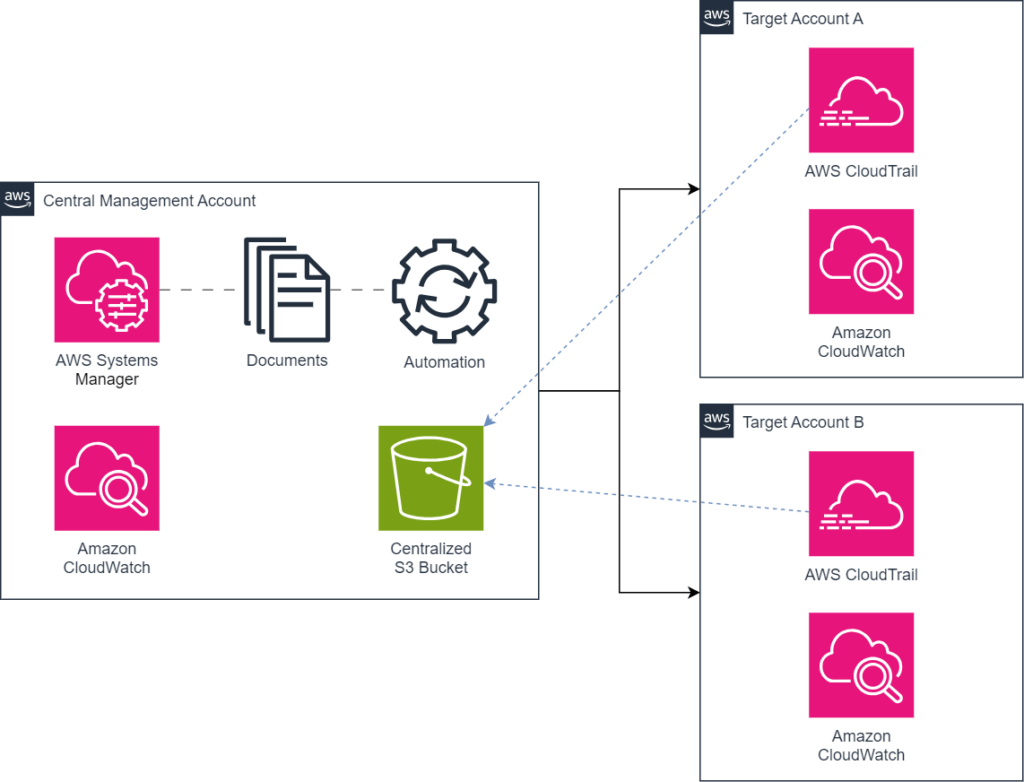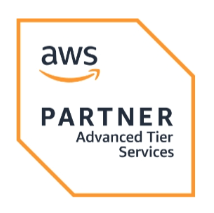In today’s digital landscape, managing Day 2 operations across a multi-account AWS infrastructure is both crucial and challenging. Luckily, AWS Systems Manager helps you do just that. This incredible service enables you to centrally configure, monitor, and manage your AWS resources across different accounts and regions. You can also use Systems Manager to automate common tasks such as patching, configuration management, and monitoring.
This blog dives into the powerful capabilities of Systems Manager and explores how it streamlines cloud operations, enhances security, and boosts efficiency within a multi-account setup.
Revolutionizing Cloud Operations Across Multiple AWS Accounts
Managing Day 2 operations in a complex cloud infrastructure can be riddled with challenges. The intricacies of multi-account setups and the need for seamless coordination across regions can often lead to inefficiencies and security gaps. This is where AWS Systems Manager steps in as a game-changer. By tackling issues head-on, it offers a range of advantages that transform operational management:
- Centralized Management: Provides a single console for centralized configuration and management of operations, security, and installations across multiple AWS accounts. This drives consistency and reduces the risk of errors.
- Automation: You can simplify and automate common tasks such as patching, inventory, compliance, backup, and disaster recovery. Systems Manager can also run commands and scripts on your instances across regions.
- Enhanced Security and Visibility: Use Systems Manager to monitor and audit the activity and configuration of your resources. This improves the security and visibility of your multi-account environment.
- Improved Scalability: Systems Manager is designed to scale with your organization. This means that you can easily add new accounts and resources as your needs grow.
If these benefits caught your attention, explore this case study on how we leveraged AWS Systems Manager, along with other AWS services, to streamline SurePoint Technologies’ operations, achieving enhanced efficiency and performance.
AWS Systems Manager Features to Maximize Cloud Operations Efficiency
Let’s dive into how Systems Manager can help your business manage cloud resources across a multi-account structure.
1. Comprehensive Resource Management
Efficiently managing resources within multi-account setup is a multifaceted challenge that requires powerful tools. AWS Systems Manager rises to the occasion and enables centralized management of resources such as Amazon EC2 instances, on-premises servers, and containerized applications.
To help you effortlessly manage your resources, Systems Manager provides the following features:
- Resource Groups: These allow you to logically categorize resources together to simplify access control and ensure efficient resource allocation. This feature streamlines resource identification for targeted operations.
- Inventory: This feature collects and stores metadata about your resources such as operating system, applications, network configuration, and patches. You can use Inventory to view the configuration and status of your resources and to identify inconsistencies or issues that need to be resolved.
- Tagging: Systems Manager facilitates easy tagging and enables you to apply consistent metadata that eases resource identification, tracking, and cost allocation.
- Application Manager: You can manage containerized applications that run on AWS Fargate or Amazon ECS with Application Manager. Easily deploy, update, scale, and monitor your applications from a single dashboard.
AWS Config Integration
AWS Config is a tool that helps you assess and audit the configurations of your resources. This can help you to identify and remediate configuration drift, ensure that your resources are compliant with your policies, and automate common Day 2 operations.
To do this, you can create a configuration recorder and AWS Config rules in each account. Then configure AWS Config to trigger AWS Systems Manager Automation documents to remediate non-compliant resources across multiple accounts.
2. Patch, Security, and Compliance Management
One of the key aspects of Day 2 operations management is ensuring that your cloud resources are up to date, secure, and compliant. AWS Systems Manager offers an arsenal of features for patch and compliance management across multiple accounts:
- Patch Manager: This feature streamlines the process of patching your operating systems and applications with security-related updates. Establish patch baselines to define the rules for auto-approving patches within days of their release, and optionally include or exclude specific patches. You can also schedule patching operations using patch policies, maintenance windows, or automation documents.

Figure 1: Architecture for scheduling a multi-account patching automation
- Parameter Store: Store and manage your configuration data such as passwords, database strings, license codes, and API keys in a secure and encrypted manner.
- Compliance: Scan your instances for patch compliance and configuration inconsistencies using the Compliance feature. You also collect and aggregate data from multiple accounts and regions, and then drill down into specific resources that are not compliant.
- Vulnerability Assessments: Perform vulnerability assessments on your instances using AWS Inspector. You can use Systems Manager Run Command to install the Inspector agent on your instances, and then use Systems Manager Explorer to view the findings and recommendations from Inspector.
If security tops your list of priorities, don’t miss our blog, Mastering Cloud Security: Your Essential Guide to the AWS Shared Responsibility Model in 2025. Discover how understanding this model can empower you to strengthen your cloud security and stay ahead of evolving threats.
3. Automation Runbook Execution
Another important aspect of operations management is automating common tasks and workflows for your AWS resources. Automation runbooks are documents that define the actions that Systems Manager performs when an automation runs. You can use these runbooks to streamline repetitive tasks such as deployments, backups, and scaling across multiple accounts.
- Pre-Defined: Leverage pre-defined runbooks that AWS provides for common tasks such as restarting Amazon EC2 instances, creating AMIs, and updating AWS CloudFormation stacks.
- Custom: Create your own runbooks using JSON or YAML and use the Document Builder in the Systems Manager console to create a runbook without having to write code.
- Action Types: Use a variety of action types in your runbooks such as executing scripts, running AWS API operations, creating or deleting AWS resources.
4. Monitoring, Logging, and Insights
One of the key benefits of using Systems Manager for monitoring and insights in multi-account structures is that it provides a unified view of your entire environment. Systems Manager integrates with services such as AWS CloudTrail and Amazon CloudWatch and enables you to collect metrics, logs, and events from AWS resources in a centralized place.
- AWS CloudTrail: Captures all API calls made to your numerous AWS accounts and delivers log files to a centralized Amazon S3 bucket that you specify.
- CloudWatch Logs: These provide a historical record of the events that occur in your AWS environment. You can use logs to troubleshoot problems.
- CloudWatch Metrics and Alarms: These offer real-time visibility into the performance of your AWS resources. You can use metrics to track the CPU utilization, memory usage, and disk I/O of your instances, and leverage alarms to trigger actions based on metric thresholds.
- CloudWatch Dashboards: You can use custom dashboards to monitor the status and performance of your resources in real-time.

Figure 2: Architecture for storing CloudTrail logs in Amazon S3 bucket within a central AWS account
5. Hybrid Cloud Management
AWS Systems Manager can be used to manage resources within multiple cloud environments such as public clouds, private clouds, on-premises data centers, or edge locations. One of the challenges of hybrid cloud infrastructures is to ensure consistent and reliable operations across heterogeneous and distributed systems. This is where a neat feature named Session Manager comes into play.
AWS Session Manager is a fully managed service that provides secure and auditable instance management without the need to open inbound ports, maintain bastion hosts, or manage SSH keys. The integration of the SSM Agent further enhances functionality by enabling seamless communication and control of instances and delivers efficient management across diverse environments.
With Session Manager, you can leverage these benefits:
- Centralized access control to managed nodes using IAM policies
- One-click access to managed nodes from the console and CLI
- Port forwarding
- Cross-platform support for Windows, Linux, and macOS
- Logging and auditing session activity
Next Steps in Enhancing Day 2 Operations for Multi-Account Structures
Managing Day 2 operations across multiple AWS accounts can feel like juggling too many tasks at once. But with AWS Systems Manager, you don’t have to do it alone. This powerful tool simplifies your cloud management, boosts security, and helps you stay on top of things with ease. It’s like having an extra pair of hands to streamline your operations and keep everything running smoothly.
Cloudelligent is your trusted partner for optimizing cloud operations across multiple AWS accounts. We help you leverage AWS Systems Manager to automate tasks, manage resources, enforce security, and enhance visibility, ensuring everything runs seamlessly across your entire infrastructure.
Take the first step toward seamless cloud operations! Schedule your Free Consultation with our cloud experts and discover how we can help you implement a holistic Day 2 operations management strategy.










